Robert Moore’s new art at TUCK
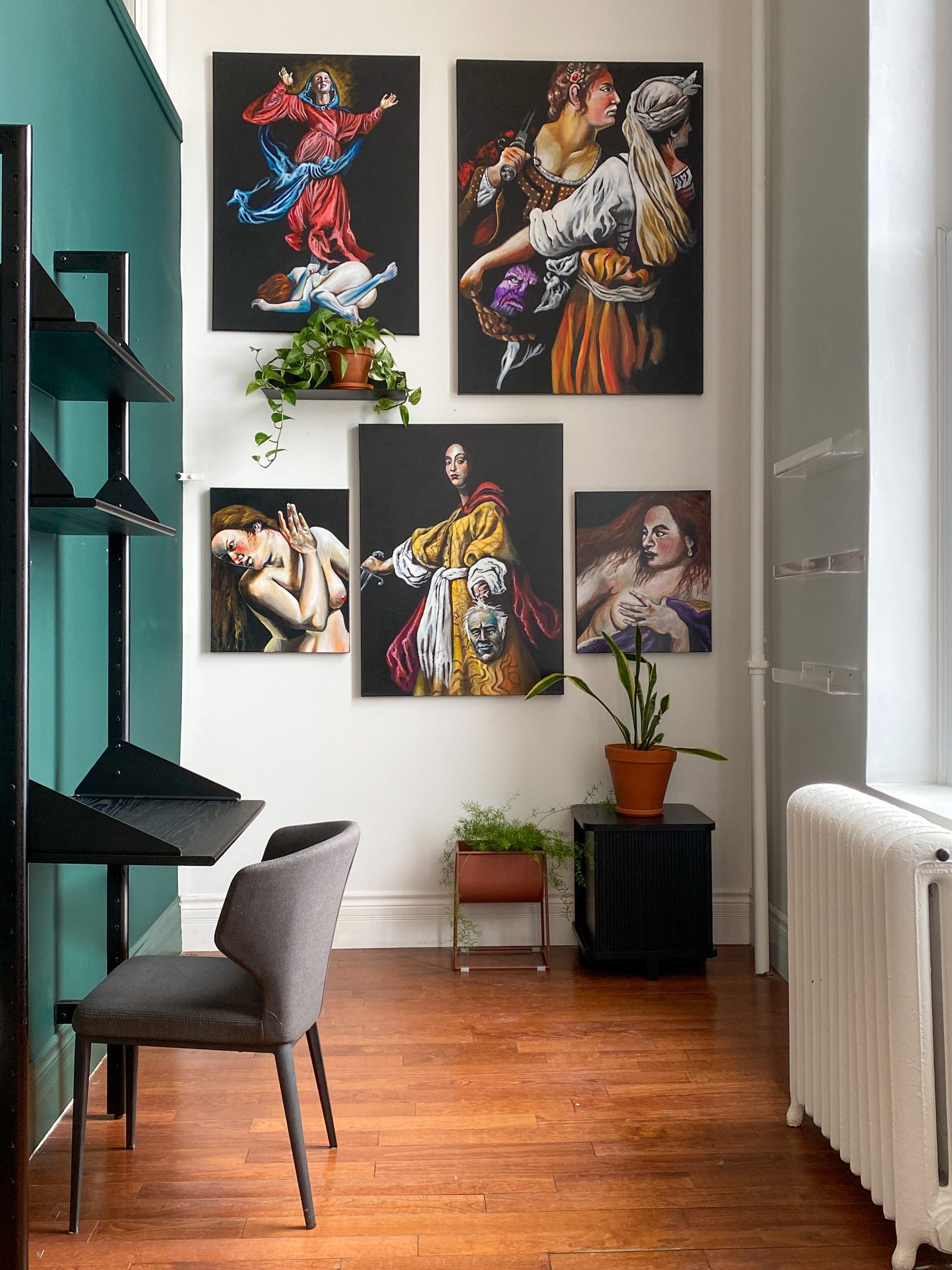
Broken Pieces of Other Thrills - Paintings by Robert Moore
We are delighted to share the latest work of Robert Moore here at TUCK.
"Oddly enough, the immediate inspiration of this series of paintings – apart from an abiding admiration for the great figurative painters of the Renaissance and Baroque – comes from a recent comment the singer/songwriter Elvis Costello. Shrugging off the suggestion that pop star Olivia Rodrigo stole one of his guitar licks (which he freely admits he stole from Bob Dylan), he said, “You take the broken pieces of another thrill and make a brand-new toy". So, think of these works as brand-new toys taken from other ‘thrills’: works by Caravaggio, Titian, Artemisia Gentileschi and Anthony van Dyke." - Robert Moore
“First Women: The Sacred and the Profane”; 30 x 40 “; acrylic on canvas.
This work features the Virgin Mary ascendant over a fallen, naked figure representing Eve. The Mary is
taken from Titian’s “Assumption of the Virgin,” a large altarpiece of the Basilica di Santa
Maria Gloriosa dei Frari painted in 1515–1518.
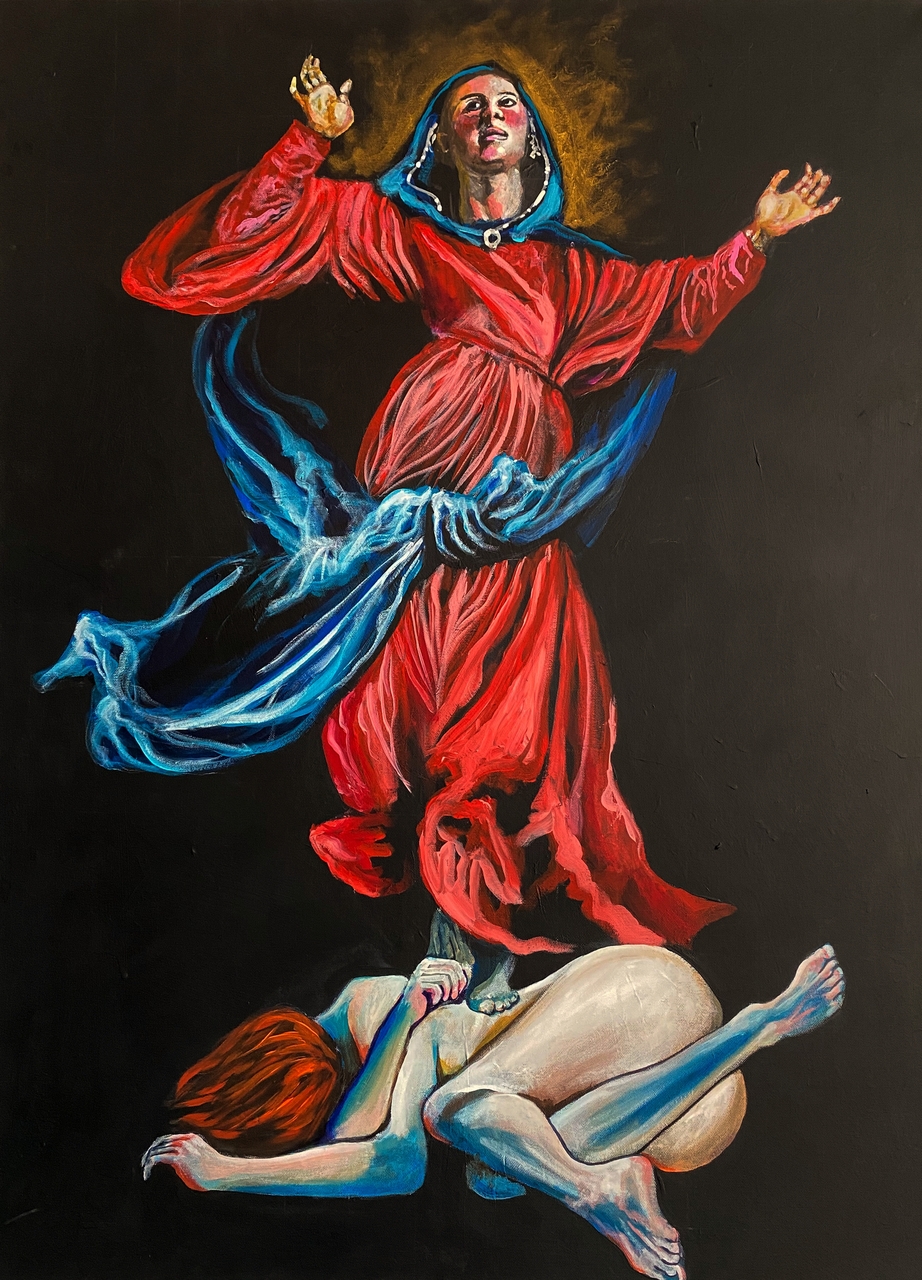
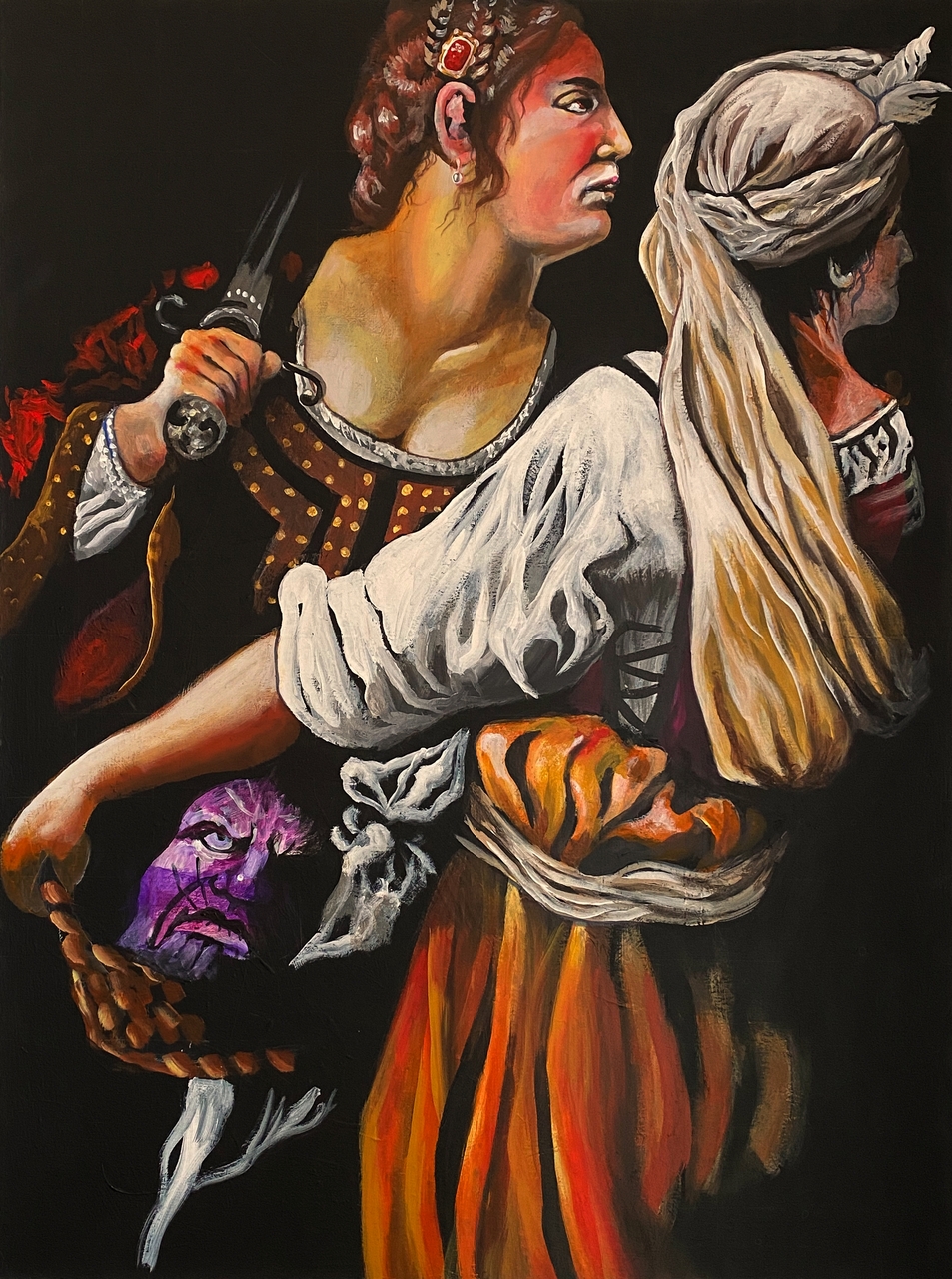
“Judith and the head of Thanos”; 36 x 48, acrylic on canvas.
This painting offers a novel take on the story Judith and Holofernes, a favourite subject of art since the Renaissance.
There are literally hundreds of paintings treating this Old Testament episode by masters such as Caravaggio, Titian, Klimt and, most recently, the contemporary American artist, Kehinde Wiley. This painting is inspired by Artemisia Gentileschi’s “Judith and Her Maidservant” (1613-14). Occupying the space traditionally held by the head of Holofernes is the head of Thanos, a super-villain from the Marvel universe.
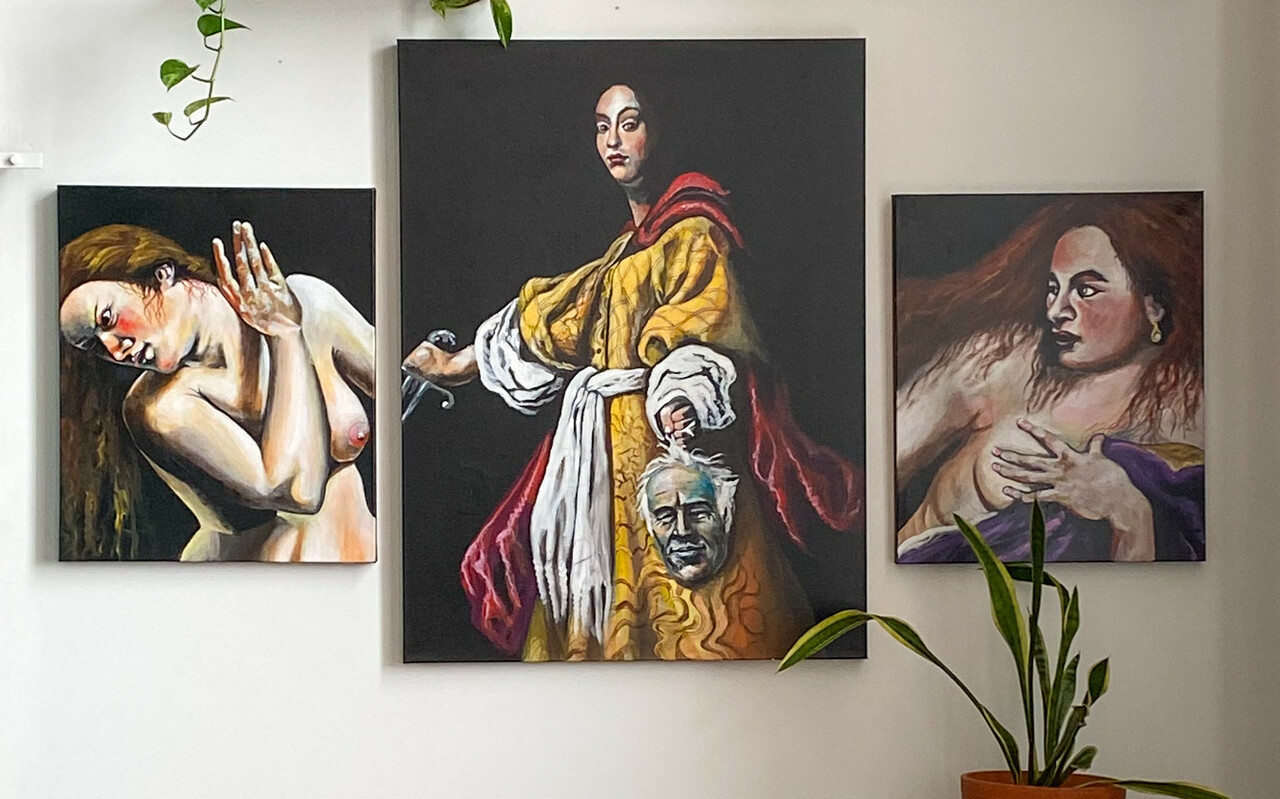
“The Assault Altarpiece.”
The Judith in the central panel of the triptych (30 x 40”; acrylic oncanvas) is inspired by Cristofano Allori’s “Judith with the head of Holofernes” (circa 1600). The head she’s holding is Jeffrey Epstein’s, among our age’s most notorious violators of
young women (a criminal many feel managed to escape justice via suicide). Each of the two side panels features a detail from paintings of the biblical episode featuring Susanna and the Elders, a favourite Biblical episode for painters, not least because it offered artists a legitimate reason to paint a female nude. The small left panel (20 x 24”; acrylic on canvas) is a detail from Artemisia Gentileschi’s “Susanna and the Elders,” painted when the artist was only 17. The Suzanne on the right is a detail from Anthony van Dyke’s “Susanna and the Elders” (1621-22).
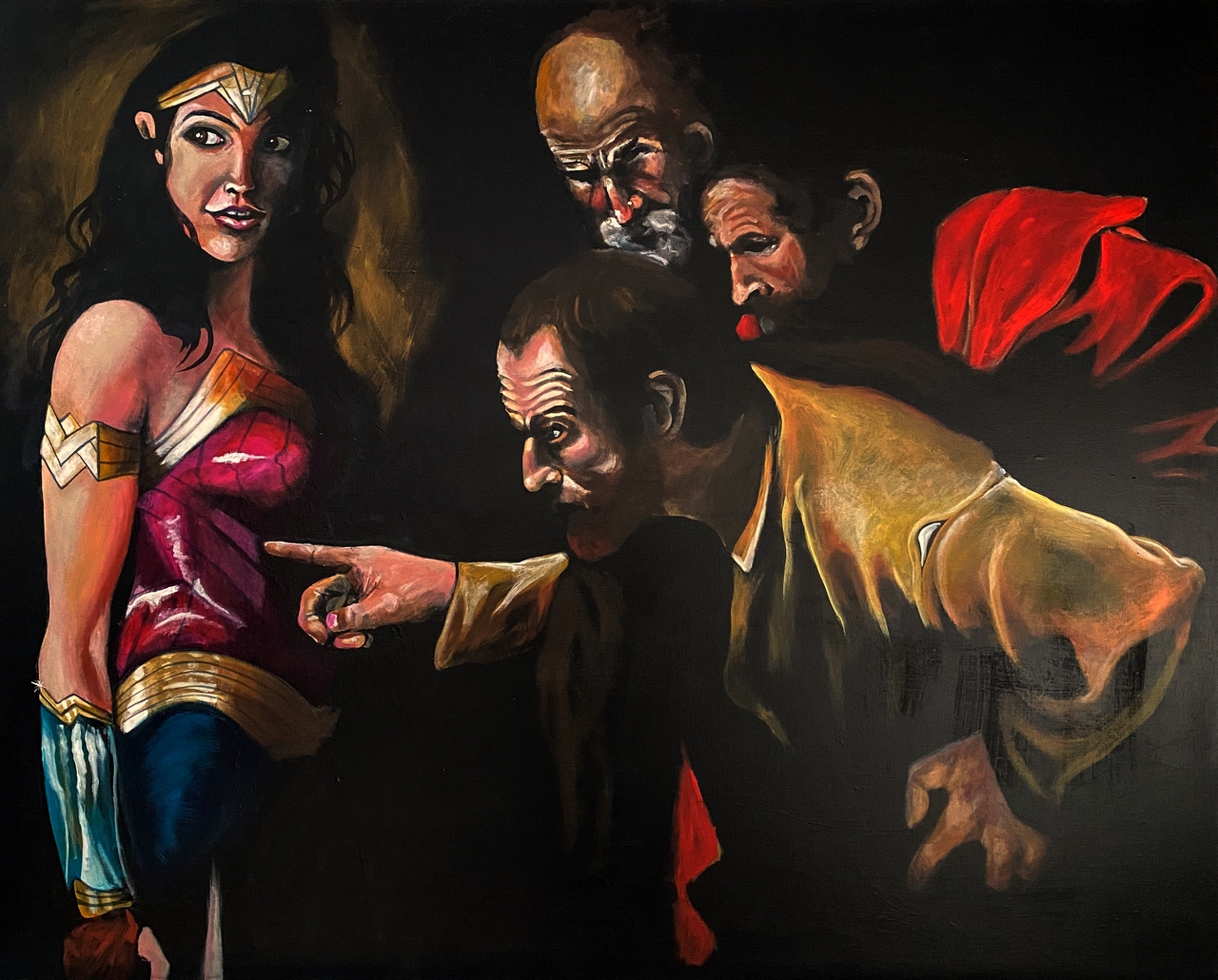
“Diana with the Patriarchs.”
48” x 60”; acrylic on canvas.
Inspired by Caravaggio’s “The
Incredulity of Saint Thomas,” 1601-02.




